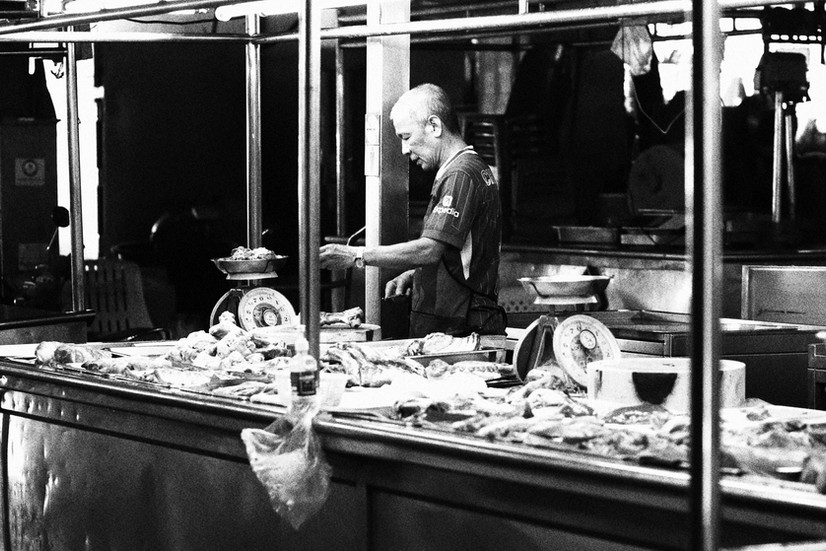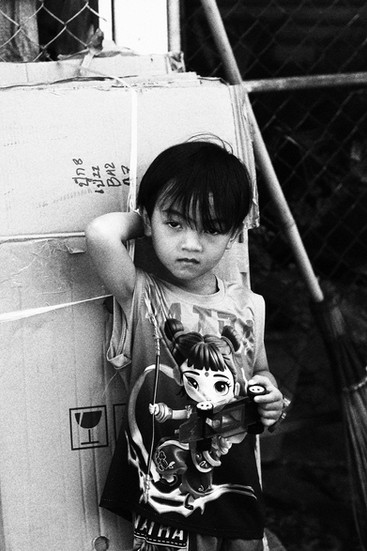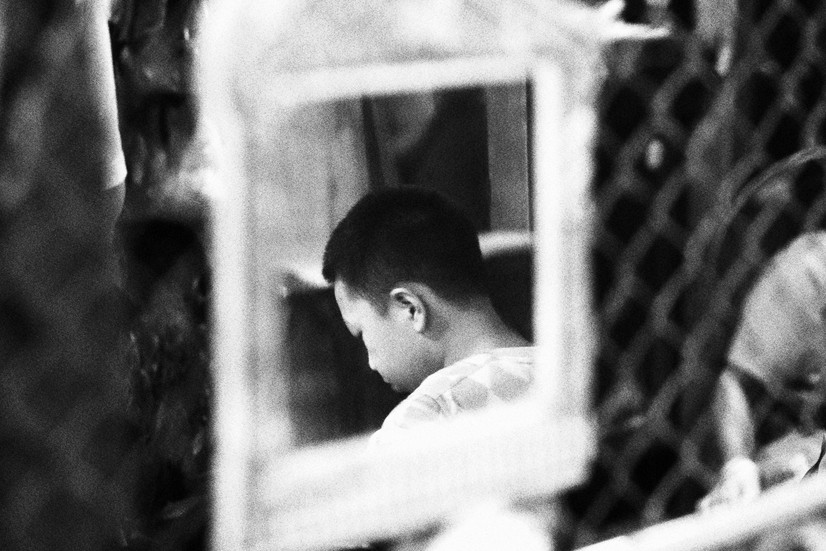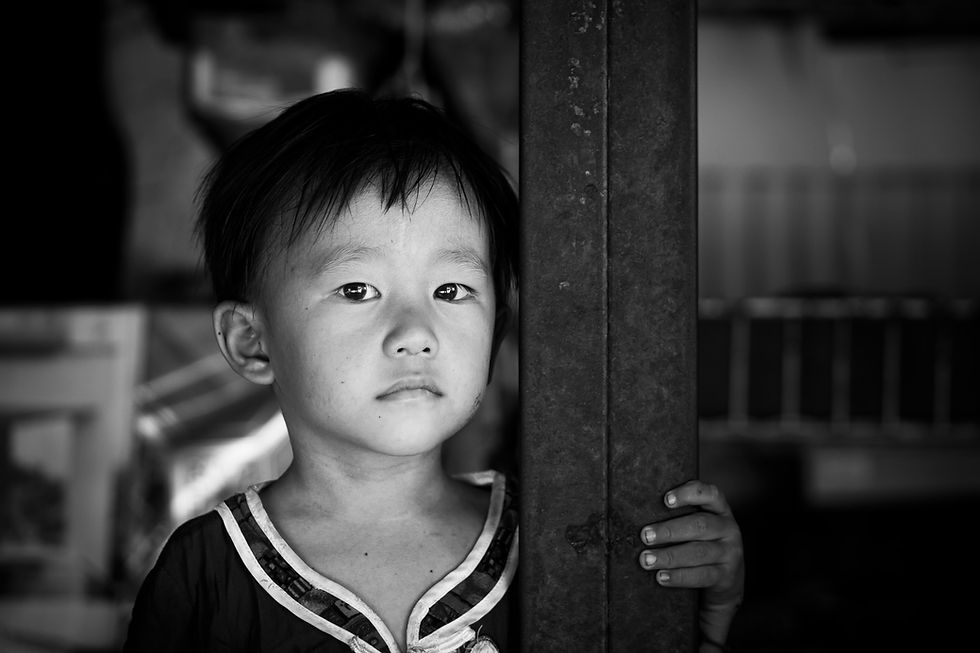The City Without Color: Shooting Grainy Black & White on the Canon 90D.
- Tatiana Mocchetti
- Aug 15
- 5 min read
Returning to a Familiar Place with a New Eye
The other day, I returned to a place in Chiang Mai I’ve photographed countless times before. It’s a spot I know by heart — the way the light falls at certain hours, the familiar faces, the flow of people and bicycles through narrow sois.
Usually, my process is predictable: I shoot in color, in RAW, and do my creative work later in post-production. That gives me maximum control — I can adjust tones, highlight certain details, and decide whether the final image will be in color or black & white.
But this time, I wanted to see differently. I set my Canon 90D to its Creative Filter – Grainy Black & White mode. No color. No going back. The scene, right there in the viewfinder, stripped down to shades of grey. It felt like walking into the same room but with the lights rearranged — everything familiar, yet somehow unfamiliar.

Why Break the Habit and Shoot Monochrome In-Camera?
For most photographers, black & white is something you decide later. You shoot in color to keep your options open, and during editing, you might experiment with a monochrome conversion. It’s safe, flexible, and it works.
But shooting directly in black & white changes the way you think. It forces you to make creative decisions in the moment, not in front of a computer.
You See Contrast First – Without color, your brain immediately registers the relationship between light and shadow.
Composition Becomes Sharper – Shapes, lines, and the balance of space are suddenly more important than hues.
Grain Adds Emotion – The Canon 90D’s grain effect gives images a raw, timeless, almost film-like character that you can feel as much as see.
It’s a different mindset. Instead of chasing colorful market stalls or vibrant lanterns, I found myself drawn to textures in the old town walls, the way sunlight sliced across a temple floor, and the deep shadow falling from an umbrella’s edge.

How Monochrome Changes the Way You See
Walking with the viewfinder showing only black & white was like turning up the volume on certain elements I normally overlook. The color of a vendor’s shirt didn’t matter anymore — but the way the fabric caught the light suddenly did.
I noticed:
Textures – The cracks in a wooden shutter, the roughness of pavement, the smooth curve of a monk’s alms bowl.
Shadow Play – In Chiang Mai, midday sun can be harsh, but in monochrome, it becomes an opportunity to create strong graphic shapes.
Micro-Stories – Without color as a focal point, gestures, postures, and small expressions carried more weight.
It slowed me down. I spent more time framing, waiting for the right moment, and looking for layers in the scene.

Tips for Shooting in Grainy Black & White (Canon 90D or Similar)
Know Your File Format – On the Canon 90D, Creative Filters like Grainy B/W only save JPEG, not RAW. This means you won’t be able to recover color or make large exposure corrections later — get your settings right in-camera.
Look for High-Contrast Scenes – Markets at noon, temple courtyards, or alleyways with dappled light work beautifully.
Embrace the Grain – Don’t try to make it “perfect.” The grain is part of the mood — lean into it.
Focus on Negative Space – In monochrome, empty areas can be as powerful as the subject.
Move Your Feet – Without color to add variety, composition becomes king. Explore different angles until the frame feels balanced.

An elderly woman sits just inside her doorway in Chiang Mai, absorbed in her book, framed by the partially open gate.
Black & White in Street Photography: A Timeless Choice
Black & white has always had a special place in street photography. For many of the most celebrated photographers — from Henri Cartier-Bresson and Robert Doisneau to Fan Ho — it wasn’t just a technical choice, but a way to focus entirely on the essence of the moment. Without color, an image can feel more universal, more timeless.
In street photography, where scenes are often busy and unpredictable, monochrome strips away distractions and helps the viewer connect directly with the subject, the gesture, or the story. The absence of color makes us notice the direction of light, the relationship between shapes, and the emotional weight of the moment.
For some photographers, this isn’t just an occasional experiment — it’s a lifelong commitment. They see the world in shades of light and shadow, believing that black & white leaves more room for interpretation, for the viewer to fill in their own emotional response. Shooting in Grainy Black & White on the Canon 90D gave me a small taste of that — a chance to experience the city as pure form and feeling, without the filter of color.
A Mini-Series on Hands: Stories Without Faces
While experimenting with the Canon 90D’s Grainy Black & White mode, I found myself drawn to details — and one detail kept calling to me: hands.
Hands tell stories without words. They carry the history of work, age, and habit. In Chiang Mai’s markets, I photographed vendors peeling fruit, scaling fish, gripping tools, or stirring steaming pots. In monochrome, every vein, wrinkle, and gesture felt amplified. The grain added a rawness that color might have softened, making the images feel timeless and intimate.
This small series reminded me that street photography isn’t always about faces or wide scenes — sometimes, the most powerful portraits are fragments. A hand holding a cleaver can say as much about a life as an entire face.
“The whole history of humanity can be found in a single pair of hands.” — Unknown
Pros and Cons of In-Camera Black & White
Pros:
Instant creative results with no editing required.
Forces you to think more about light, shadow, and form.
Creates a nostalgic, almost cinematic mood straight out of the camera.
Cons:
Limited flexibility in post-processing.
You can’t recover color later if you change your mind.
Exposure mistakes can be harder to correct without RAW.
Reflections from the Day
That day in Chiang Mai reminded me why it’s so important to step out of routine. We can become too comfortable in our habits — even creative ones. By shooting directly in Grainy Black & White, I wasn’t just experimenting with a filter; I was rewiring the way I observed the world.
Photography isn’t just about capturing what’s in front of you. It’s about how you choose to see it. And sometimes, a single setting on your camera can be the difference between taking a picture you’ve taken a hundred times… and making one that feels entirely new.
If you’re in Chiang Mai, whether you’re wandering through Warorot Market, standing in a temple courtyard, or watching the shadows lengthen along the old city moat, try switching to monochrome before you take the shot. You might just discover a side of the city — and of your own photography — you haven’t met yet.





































Comments